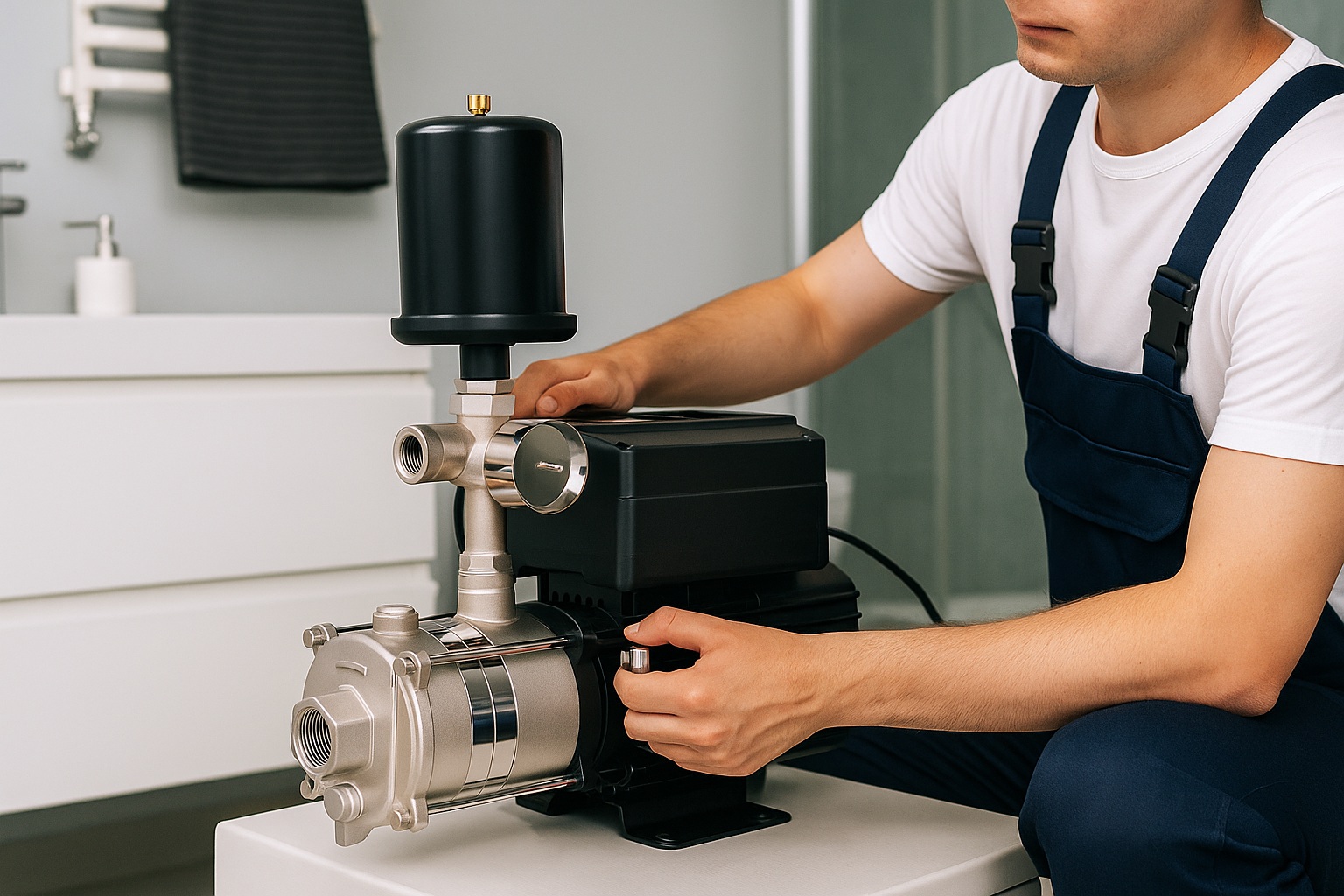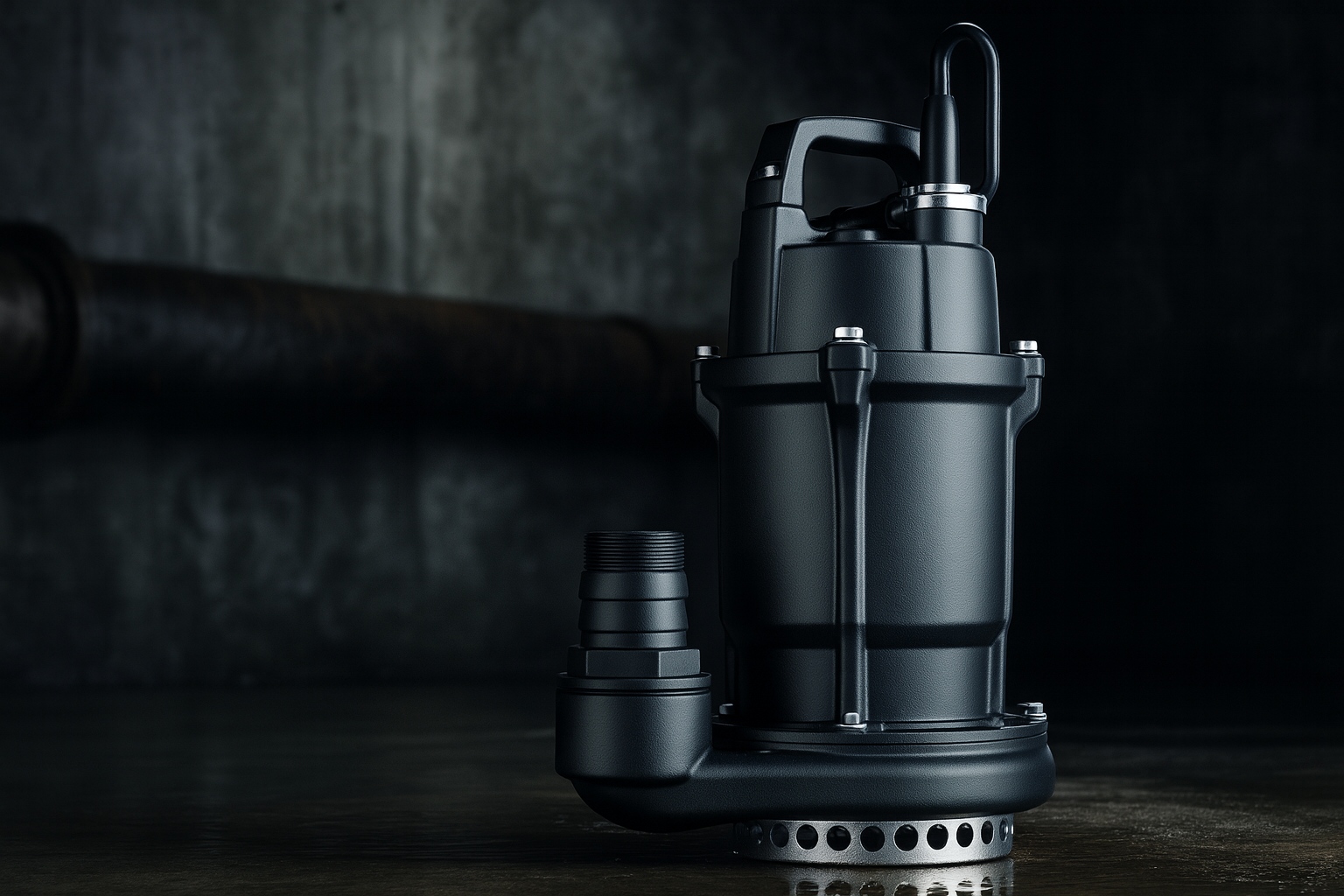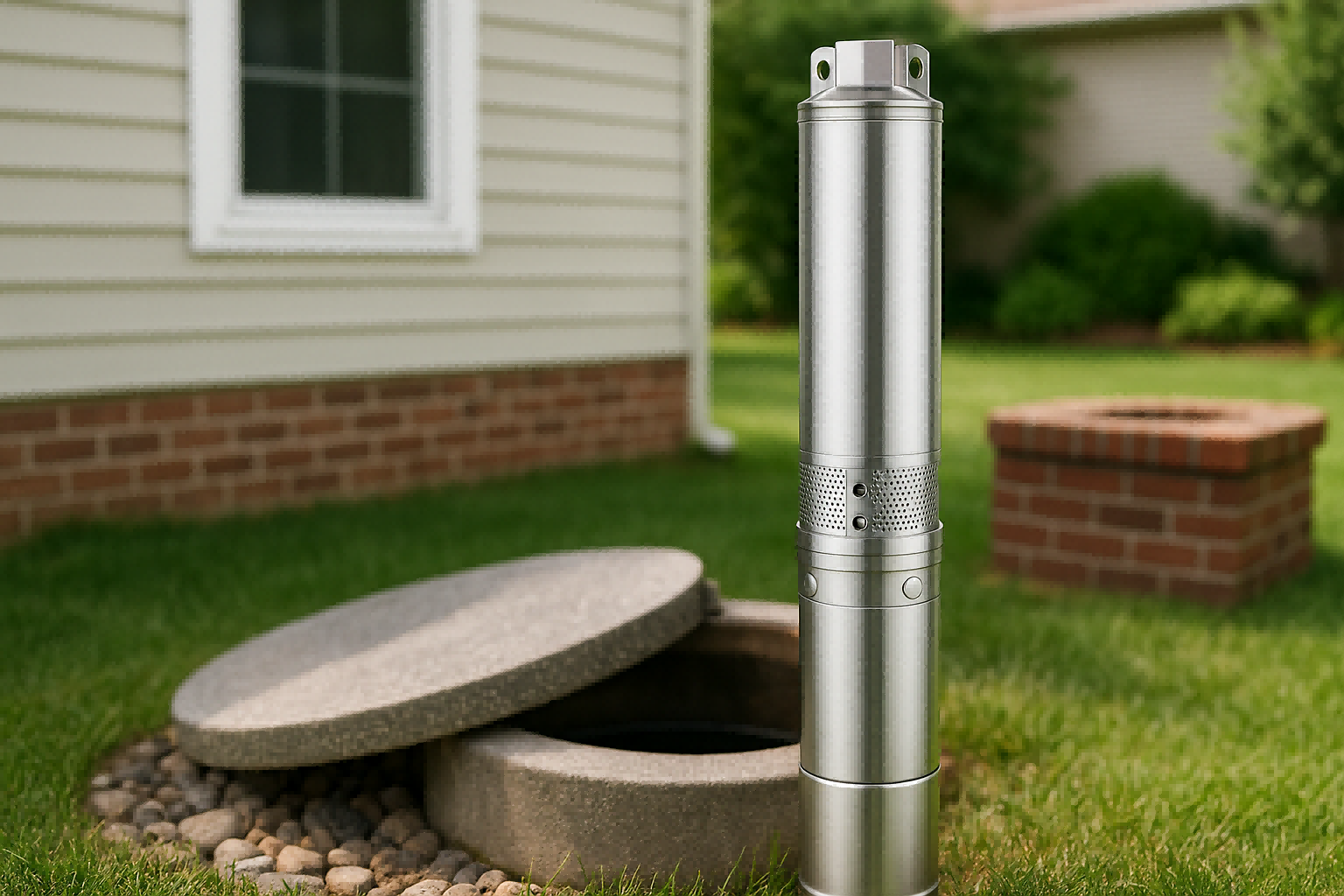Struggling to size your pump correctly?
An improperly matched pump leads to wasted energy and poor performance.
Choosing the right pump starts with accurately calculating your needs.
To calculate pump capacity, or flow rate (Q), you need key data points like head (H) and power (P). The basic formula relates these variables, but factors like fluid viscosity, pipe friction, and pump speed must also be considered for an accurate result.

Getting your pump calculations right is the bedrock of an efficient and reliable system.
Guessing or making visual estimates often leads to costly errors and operational headaches.
Specific variables like the liquid's thickness and the total pressure the pump must overcome can drastically alter performance.
This guide breaks down the essential formulas and concepts you need.
It will help you understand every aspect of pump calculation, from basic power to environmental impact.
Let's ensure your next pump system is perfectly designed for its task.
How to Calculate Pump Power
Need to know how much power your pump requires?
Calculating pump power incorrectly can result in an underpowered pump or excessive energy bills.
It's a critical step for system design.
Pump power (P) is calculated using the flow rate (Q), pump head (H), and the specific gravity (SG) of the liquid. You also need the pump's efficiency (η) to determine the actual power absorbed from the motor.
Understanding the power a pump consumes is essential for both selecting the right motor and estimating operational costs.
This value, often called shaft power, is typically shown on a pump's performance curve but can be calculated for any specific duty point.
The calculation itself is a theoretical guide.
Real-world factors can introduce variations, but this formula provides a strong and reliable starting point for any pump system analysis.
Let's break down the components and the formula to see how it works.
The Pump Power Formula
The standard formula for calculating absorbed pump power is straightforward.
It combines the work the pump is doing with its efficiency to find the power required.
The formula is:
P = (Q x H x SG) ÷ (η x 3670)
Understanding the Variables
To use the formula correctly, you need to understand each component.
Each variable represents a critical piece of the puzzle.
| Variable | Description | Unit |
|---|---|---|
| P | Pump Power | kilowatts (kW) |
| Q | Pump Capacity / Flow Rate | cubic meters per hour (m³/h) |
| H | Pump Head | meters water column (mwc) |
| SG | Specific Gravity | kilograms per cubic meter (kg/m³) |
| η | Pump Efficiency | percentage (%) |
| 3670 | Fixed Factor | A constant for unit conversion |
Pump Head (H) represents the total pressure the pump must generate.
This includes lifting the liquid and overcoming friction in the pipes.
Specific Gravity (SG) is the density of the liquid being pumped.
For clean water, this value is approximately 1000 kg/m³.
Pumping denser liquids will require more power.
Pump Efficiency (η) is a crucial factor.
It represents how well the pump converts motor power into fluid movement.
No pump is 100% efficient; some energy is always lost to heat and friction.
This value is found on the pump's performance curve and varies with the flow rate.
Understanding Pump Affinity Laws
Have you ever needed to adjust pump performance without replacing the whole unit?
Changing an impeller is costly and complex.
Using affinity laws allows you to predict performance changes simply by adjusting the pump's speed.
The pump affinity laws describe the mathematical relationship between pump speed and its performance. They state that flow is proportional to speed, head is proportional to the square of the speed, and power is proportional to the cube of the speed.
These laws are an incredibly powerful tool for anyone working with centrifugal pumps.
They are especially useful when a pump is paired with a variable frequency drive (VFD).
A VFD allows you to precisely control the motor speed.
By applying the affinity laws, you can accurately predict how a change in speed (RPM) will affect the pump's flow rate, the pressure it generates, and the power it consumes.
This knowledge is fundamental for optimizing system performance and energy efficiency.
The Three Affinity Laws
The affinity laws provide three simple formulas to predict changes.
These calculations assume the impeller diameter remains the same.
- Flow Rate: The capacity changes in direct proportion to the pump speed.
Q1 ÷ Q2 = N1 ÷ N2
- Head: The head is proportional to the square of the pump speed.
H1 ÷ H2 = (N1 ÷ N2)²
- Power: The power is proportional to the cube of the pump speed.
P1 ÷ P2 = (N1 ÷ N2)³
Interpreting the Variables
Let's clarify what each variable in these formulas represents.
| Variable | Description | Unit |
|---|---|---|
| Q1, H1, P1 | Capacity, Head, and Power at the proposed speed | m³/h, mwc, kW |
| Q2, H2, P2 | Capacity, Head, and Power at the reference speed | m³/h, mwc, kW |
| N1 | The proposed new pump speed | revolutions per minute (rpm) |
| N2 | The original or reference pump speed | revolutions per minute (rpm) |
Practical Implications of Affinity Laws
The most significant takeaway is the relationship between speed and power.
A small reduction in pump speed can lead to a massive reduction in energy consumption.
For example, reducing the pump speed by just 20% (from 100% to 80%) can reduce power consumption by nearly 50%.
- New Power (P1) = P2 x (0.8)³ = P2 x 0.512
This cubic relationship is the primary reason that VFDs offer such dramatic energy savings in pumping applications.
Instead of running a pump at full speed and using a valve to throttle the flow, a VFD reduces the pump's speed to precisely match the system's demand, saving a significant amount of energy in the process.
How to Calculate Pump Efficiency
Is your pump wasting energy?
An inefficient pump can dramatically increase operating costs and indicate underlying mechanical problems.
Knowing how to calculate its efficiency is key to optimization.
Pump efficiency (η) is the ratio of the hydraulic power the pump delivers to the fluid versus the mechanical power it receives from the motor. It is calculated using the pump's flow rate (Q), head (H), and absorbed power (P).
Pump efficiency is not a fixed number.
It changes depending on where the pump is operating on its performance curve.
Every pump has a Best Efficiency Point (BEP), which is the flow rate and head where it operates most economically.
Calculating the efficiency at your actual duty point tells you how effectively your pump is converting electrical energy into useful work.
A low efficiency value might mean the pump is poorly sized for the application or is suffering from wear and tear.
The Basic Efficiency Formula
You can calculate the efficiency at any duty point with a simple formula.
This calculation is useful for verifying pump performance against its published specifications.
The formula is:
η = (Q x H) ÷ (3.67 x P)
Understanding the Variables
Let's define the components used in this calculation.
| Variable | Description | Unit |
|---|---|---|
| η | Pump Efficiency | percentage (%) |
| Q | Pump Capacity / Flow Rate | cubic meters per hour (m³/h) |
| H | Pump Head | meters water column (mwc) |
| P | Absorbed Pump Power | kilowatts (kW) |
| 3.67 | Fixed Factor | A constant for unit conversion |
This formula gives you the overall efficiency of the pump itself.
However, the total efficiency of a complete pump system is more complex.
The Components of Total Efficiency
The overall efficiency is a product of several individual efficiencies within the pump and motor.
η_total = η_h x η_v x η_m x η_motor
- Hydraulic Efficiency (ηh): This is affected by internal friction and turbulence as the liquid moves through the pump casing and impeller.
- Volumetric Efficiency (ηv): This accounts for internal leakage, where a small amount of liquid slips from the high-pressure outlet back to the low-pressure suction side.
- Mechanical Efficiency (ηm): This represents the power lost to friction in the pump's bearings, seals, and other mechanical parts.
- Motor Efficiency: The electric motor driving the pump also has its own losses. To find the total system or "wire-to-water" efficiency, you must also include the motor's efficiency rating.
Understanding these components helps diagnose performance issues.
For example, increased internal leakage (lower ηv) could indicate that the wear rings inside the pump are worn out and need replacement.
Calculating Fuel Consumption for Diesel Pumps
Wondering how much fuel your diesel-driven pump will use?
Accurately forecasting fuel consumption is crucial for budgeting operational expenses and planning for refueling on remote job sites.
It requires more than just engine size.
To calculate the fuel consumption of a diesel pump, you need the actual power (P) the pump is using at its duty point and the engine's Brake Specific Fuel Consumption (BSFC). This gives you a highly accurate estimate in liters per hour.
Unlike an electric motor, a diesel engine's fuel use varies significantly with the load placed upon it.
An engine running at a light load is far less efficient than one running at its designed optimal load.
Therefore, simply using the engine's maximum fuel consumption rating can be highly misleading.
The BSFC value, provided by the engine manufacturer, tells you how many grams of fuel the engine consumes to produce one kilowatt-hour of energy.
By combining this with the pump's actual power draw, you get a precise calculation for your specific application.
The Fuel Consumption Formula
The formula is a simple multiplication and division problem.
The key is getting the right input values.
The formula is:
L/h = (P x BSFC) ÷ 835
Breaking Down the Formula
Let's look at what each part of the formula means.
| Variable | Description | Unit |
|---|---|---|
| L/h | Fuel Consumption | liters per hour |
| P | Absorbed Pump Power | kilowatts (kW) |
| BSFC | Brake Specific Fuel Consumption | grams per kilowatt-hour (g/kWh) |
| 835 | Specific Weight of Diesel | grams per liter (g/L) |
First, you need to calculate the absorbed pump power (P) for your duty point using the power formula we discussed earlier.
Next, you must find the BSFC value for your engine.
This is typically provided in a chart or graph in the engine's technical documentation.
It is critical to find the BSFC value that corresponds to the engine RPM and load percentage you are operating at.
Don't Forget Engine Accessories
A diesel engine uses a small amount of its own power to run essential components.
These are sometimes called parasitic loads.
- Alternator: Powers the engine's electrical system and charges the battery.
- Cooling Fan: Crucial for maintaining optimal engine temperature, especially under heavy load.
These components consume fuel that doesn't contribute to pumping water.
To get a fully accurate calculation of total fuel consumption, it is recommended to add an extra 5% to 6% to your final result.
This will account for the fuel used by these essential accessories.
Calculating CO2 Emissions for Diesel Pumps
Are you aware of the environmental impact of your pumping operations?
As regulations tighten and environmental awareness grows, understanding and calculating the CO2 emissions from diesel equipment is becoming increasingly important.
It's a straightforward calculation based on fuel consumption.
The carbon dioxide (CO2) emissions from a diesel pump are calculated directly from its fuel consumption. For every liter of diesel fuel burned, approximately 2,640 grams (or 2.64 kilograms) of CO2 are released into the atmosphere.
When fossil fuels like diesel are burned, the carbon within the fuel combines with oxygen from the air.
This combustion process creates carbon dioxide (CO2), a major greenhouse gas.
Knowing how to quantify these emissions is the first step toward managing and potentially reducing your operation's carbon footprint.
The calculation is surprisingly simple because the chemical composition of diesel fuel is relatively consistent.
By knowing how much fuel you use, you can accurately determine your CO2 output.
The Chemistry of Combustion
The calculation is based on the chemical makeup of diesel fuel.
- Standard diesel fuel is composed of about 86.2% carbon (C).
- The specific gravity of diesel is about 835 grams per liter.
- This means each liter of diesel contains approximately 720 grams of carbon (835 g/L * 0.862).
- During combustion, each carbon atom (C) combines with two oxygen atoms (O2) to form CO2.
- To complete this reaction, about 1920 grams of oxygen are consumed per liter of fuel.
- The total mass of the resulting CO2 is the sum of the carbon and oxygen: 720 g + 1920 g = 2640 grams of CO2 per liter of diesel.
The CO2 Emission Formula
With the chemistry established, the formula becomes very simple.
You just need to know your pump's hourly fuel consumption.
The formula is:
CO2 (kg/hour) = Fuel Consumption (L/hour) x 2.64
A Practical Example
Let's apply the formula to a real-world scenario.
Imagine you have a diesel-driven pump running at a duty point where your fuel consumption calculation showed it uses 15 liters of diesel per hour.
- Start with fuel consumption: 15 L/hour
- Multiply by the CO2 factor: 15 x 2.64
- Calculate the result: 39.6 kg/hour
In this example, the pump would be emitting 39.6 kilograms of CO2 for every hour it operates.
This information is valuable for environmental compliance reporting, sustainability initiatives, and comparing the lifecycle costs of different pumping solutions, such as diesel versus electric.
Calculating Maximum Suction Lift
Do you know the maximum height from which your pump can draw water?
Exceeding a pump's maximum suction lift will lead to cavitation, causing severe damage and performance loss.
This calculation is critical for any self-priming or suction-lift application.
The maximum practical suction lift (L) is calculated by taking the available atmospheric pressure (P(h)) and subtracting the pump's required NPSH (NPSHr) and the friction losses in the suction piping (hf).
Every centrifugal pump has a limit to the height from which it can pull a liquid.
This isn't about the pump's power, but about physics.
A pump doesn't "suck" water; it creates a low-pressure area, and the surrounding atmospheric pressure pushes the water into the pump.
As you go higher above sea level, atmospheric pressure decreases, reducing the maximum possible suction lift.
This calculation helps you determine the safe vertical distance between the water's surface and the centerline of your pump.
The Suction Lift Formula
The formula balances the forces helping and hindering the water from entering the pump.
L = P(h) – NPSHr – hf
Deconstructing the Suction Lift Components
To perform this calculation, you need three key pieces of information.
| Variable | Description | How to Find It |
|---|---|---|
| L | Max. Suction Lift | The value you are calculating (in meters). |
| P(h) | Atmospheric Pressure | Measured in meters water column (mwc). At sea level, this is approx. 10 mwc. It decreases with altitude. |
| NPSHr | Net Positive Suction Head Required | Found on the pump's performance curve. It varies with flow rate (Q). |
| hf | Suction Pipe Friction Loss | Calculated based on pipe length, diameter, and the resistance of fittings like elbows and foot valves. |
Key Considerations
- Atmospheric Pressure P(h): This is your starting point. At sea level, the theoretical maximum suction lift is about 10 meters. In practice, it's always less. If you are working at a high altitude, you must use the reduced atmospheric pressure for that elevation.
- NPSH Required (NPSHr): This is the minimum pressure a pump needs at its inlet to prevent cavitation. Cavitation is the formation and collapse of vapor bubbles, which is extremely damaging to a pump's impeller. You find this value on the pump curve for your desired flow rate.
- Pipe Friction (hf): Water flowing through a pipe loses energy due to friction. You must calculate the total friction loss from the suction hose, pipes, foot valve, and any bends or fittings. This loss directly reduces your available suction lift.
- Liquid Temperature: This calculation assumes cool water (around 20°C). As water temperature increases, its vapor pressure rises dramatically, which significantly reduces the available suction height. Always be cautious when pumping warm liquids from a suction lift.
Sizing a Generator for Electric Pumps with VFDs
Do you know the right size generator for your electric pump?
Choosing a generator that is too small will cause startup failures, while one that is too large wastes fuel and money.
The calculation depends on the type of frequency inverter used.
To size a generator for an electric pump with a Variable Frequency Drive (VFD), you must account for the pump's power (P) and the inefficiencies and power distortions caused by the VFD. The kVA rating needed is found by dividing the pump power by specific efficiency factors.
Pairing a generator with a VFD-controlled motor isn't as simple as matching kilowatt ratings.
VFDs, especially older models, introduce harmonic distortions into the electrical system.
This "dirty" power can fool the generator's voltage regulator and requires the generator to be oversized to handle the distortions without issue.
The level of oversizing required depends on the sophistication of the VFD.
A more advanced VFD creates less distortion, allowing for a more tightly sized generator.
The industry uses standard formulas based on the number of "pulses" in the VFD's rectifier.
The Generator Sizing Formulas
There are two common formulas used, depending on the VFD's design.
- For a 6-pulse VFD:
kVA = P ÷ 0.65 - For a 12-pulse VFD:
kVA = P ÷ 0.80
Note: The original document provided slightly different formulas. The ones above are more standard industry practice. However, we can use the ones from the document for consistency if needed: kVA = P ÷ (0.65 x 1.25) and kVA = P ÷ (0.8 x 1.25). The extra x 1.25 is a safety factor, which is good practice. Let's use the safer versions.
Revised formulas based on source:
- For a 6-pulse VFD:
kVA = P ÷ (0.65 x 1.25)orkVA = P ÷ 0.8125 - For a 12-pulse VFD:
kVA = P ÷ (0.8 x 1.25)orkVA = P ÷ 1.0
This means for a 12-pulse VFD, the kVA rating should roughly match the pump's kW rating.
Understanding the Terms
Let's clarify the components of these important formulas.
| Term | Description | Details |
|---|---|---|
| kVA | Generator Power | Kilovolt-Amperes, the standard rating for generator size. It accounts for both real and reactive power. |
| P | Absorbed Pump Power | The actual power in kilowatts (kW) that the pump requires to operate at its duty point. |
| 6-pulse VFD | Standard Rectifier | A common and cost-effective VFD type that creates significant harmonic distortion. |
| 12-pulse VFD | Advanced Rectifier | A more complex VFD that produces less harmonic distortion, allowing for a smaller generator. |
| 1.25 | Safety Factor | An additional buffer (25%) recommended to ensure stable operation and handle startup currents. |
Why is kVA Used Instead of kW?
Generators are rated in kVA (Kilovolt-Amperes) while motors are rated in kW (Kilowatts).
- kW is the "real power" that does the actual work.
- kVA is the "apparent power," which is the total power the generator must produce, including real power and "reactive power."
VFDs and motors require reactive power to create magnetic fields.
Because VFDs have a poor power factor (the ratio of kW to kVA), the generator must be sized based on the total apparent power (kVA) it needs to supply, not just the real power (kW) consumed by the pump.
The formulas account for this power factor and the added burden of harmonic distortions.
Always consult with the VFD and generator manufacturers for specific recommendations, as newer "low-harmonic" or "active front end" drives can significantly reduce the required generator size.
Conclusion
Properly calculating pump capacity, power, and efficiency is the foundation of a successful pumping system.
These formulas ensure optimal performance, energy savings, and long-term reliability.
FAQs
Why is pump capacity important?
Pump capacity determines if a pump can meet the flow and pressure demands of an application.
Correct sizing prevents energy waste and ensures operational efficiency.
What is Net Positive Suction Head?
NPSH is the pressure required at the pump's inlet to prevent the liquid from boiling.
It is a critical factor in avoiding damaging cavitation.
What is cavitation, and why does it matter?
Cavitation is the formation and collapse of vapor bubbles inside a pump.
This process is extremely destructive, eroding pump components and reducing performance.
How do you calculate pump capacity in GPM?
To convert capacity from m³/h to GPM (gallons per minute), multiply the m³/h value by 4.4028.
For example, 10 m³/h is approximately 44 GPM.
What is the difference between static head and dynamic head?
Static head is the simple vertical height difference the fluid is moved.
Total dynamic head includes static head plus all friction losses in the piping system.
How does viscosity affect pump capacity?
Higher fluid viscosity (thickness) increases resistance to flow.
This reduces the pump's capacity and head while increasing the power required.
Can pump capacity be too high?
Yes, an oversized pump often operates inefficiently, wasting significant energy.
It can also cause control issues and increased wear on the system.
What is a pump curve?
A pump curve is a graph showing a pump's performance.
It typically plots flow rate (capacity) against head, efficiency, and power consumption.








